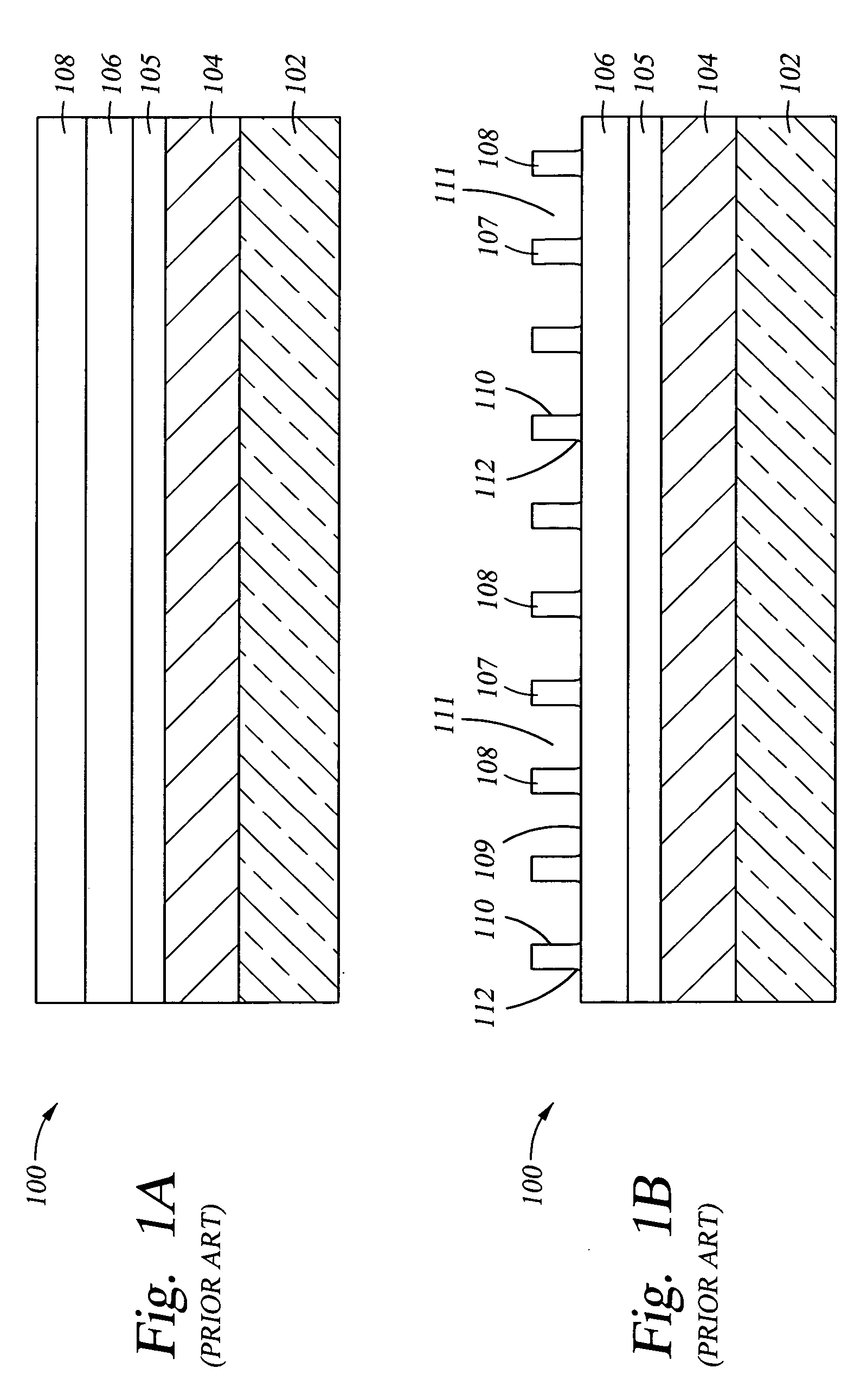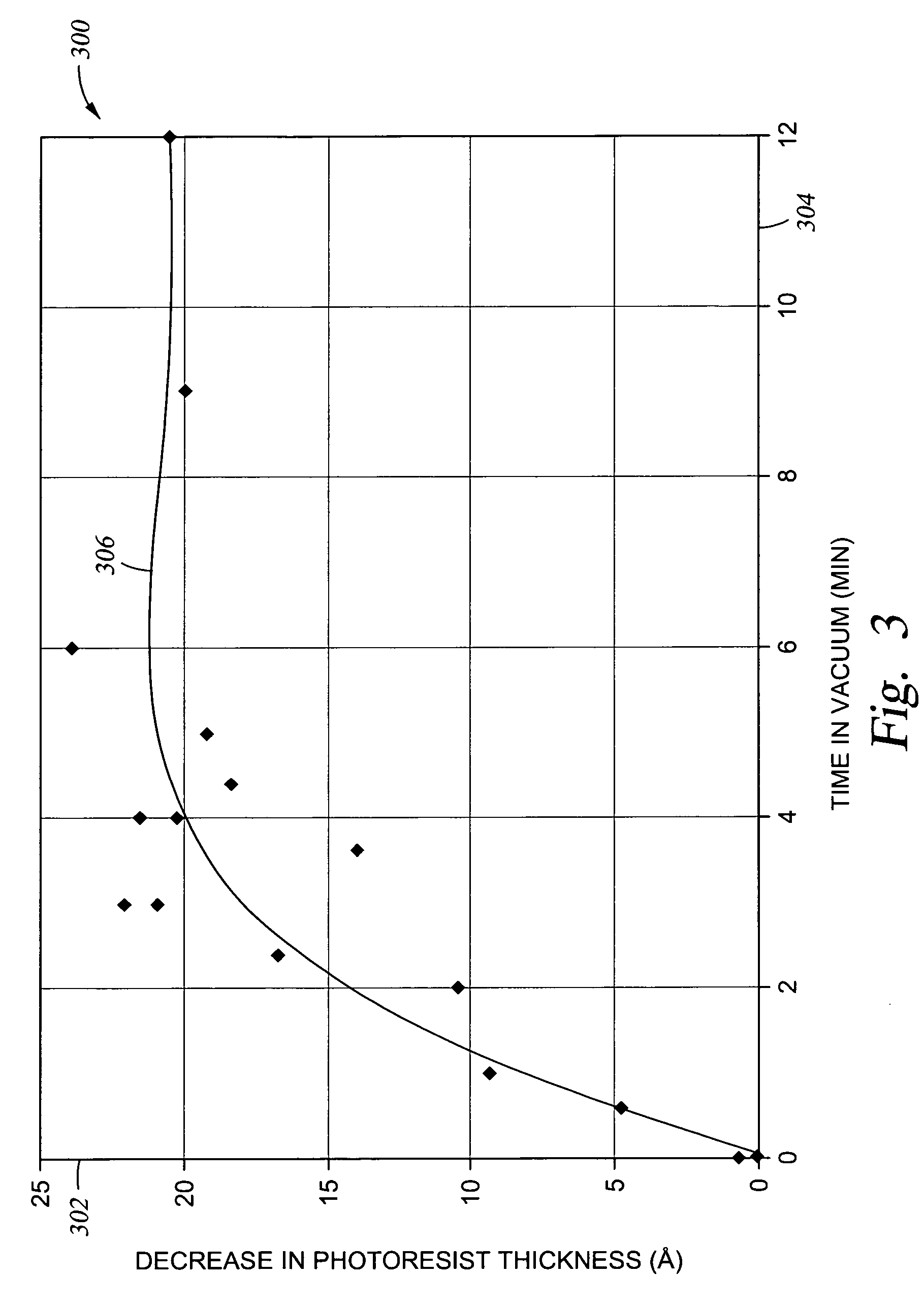Method of improving the uniformity of a patterned resist on a photomask
- Summary
- Abstract
- Description
- Claims
- Application Information
AI Technical Summary
Benefits of technology
Problems solved by technology
Method used
Image
Examples
Embodiment Construction
[0024] We have discovered a method of improving the patterning of a layer of photoresist which has been applied over a photomask substrate, The present method results in improved critical dimension uniformity of the developed photoresist. In general, the method comprises the steps of: a) post-apply baking the photoresist; b) exposing the photoresist to imaging radiation (typically direct-write radiation); c) exposing the imaged photoresist to a vacuum for a period of time sufficient to allow pattern critical dimensions to equilibrate across the photoresist, at a process chamber pressure ranging from about 5×10−6 mTorr to about 5 mTorr (typically, at a temperature ranging from about 20° C. to about 60° C., and for a time period ranging from about 10 minutes to about 70 hours); d) post-exposure baking the imaged photoresist; and e) developing the imaged photoresist to create a pattern having openings through the photoresist layer thickness.
[0025] The method may further comprise the a...
PUM
| Property | Measurement | Unit |
|---|---|---|
| Temperature | aaaaa | aaaaa |
| Temperature | aaaaa | aaaaa |
| Temperature | aaaaa | aaaaa |
Abstract
Description
Claims
Application Information
 Login to View More
Login to View More - R&D
- Intellectual Property
- Life Sciences
- Materials
- Tech Scout
- Unparalleled Data Quality
- Higher Quality Content
- 60% Fewer Hallucinations
Browse by: Latest US Patents, China's latest patents, Technical Efficacy Thesaurus, Application Domain, Technology Topic, Popular Technical Reports.
© 2025 PatSnap. All rights reserved.Legal|Privacy policy|Modern Slavery Act Transparency Statement|Sitemap|About US| Contact US: help@patsnap.com



